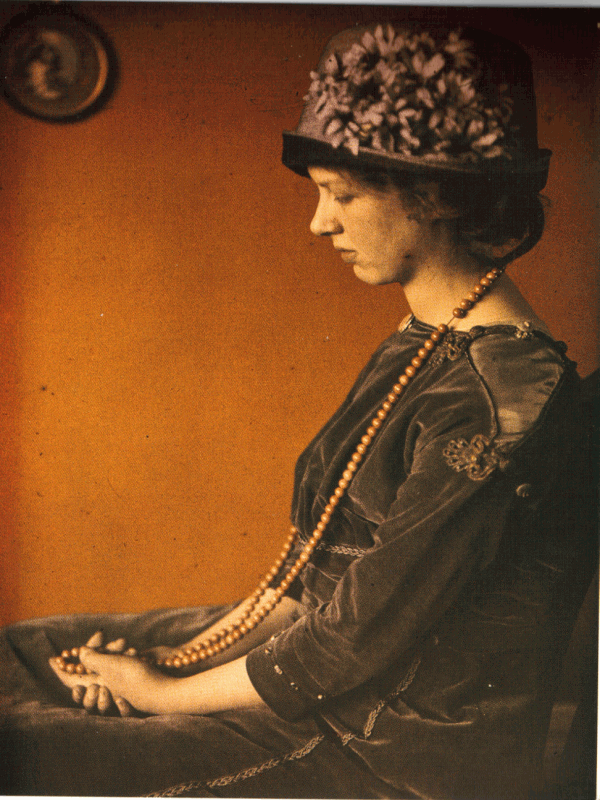When their new house on the Four Oaks Park Estate was being planned, George and Emma Barton specified that it should include a dark room. Emma had already begun taking pictures when they lived at The Grove, Wishaw, and by the time they moved in to their new house with their four young children in 1900, she was already making a name for herself as a photographer. The new dark room must have been a put to good use, since in 1903 Emma Barton was awarded the Royal Photographic Society Medal, the most prestigious award in the world for photography.
Emma was the eldest of six children born to Ambrose and Elizabeth Rayson in their back-to-back house in Aston. They moved to Camp Hill, Emma left school in 1884 at the age of twelve, and her father died the next year. She took a job as a clerk, and moved to Deritend in 1891 after her mother remarried, where they lived next door to a photographic studio. This is when she learned all about photography, and also when she went to live with George Barton and start a family.
In 1900 art photography was in vogue, and Emma Barton excelled in photographs of models imitating the pose and costume of Old Master paintings - her photograph “Alma Mater” which won her the medal shows a mother and child with a halo effect. This phase continued, her autochrome picture of 1911 “the Blue Bonnet” has echoes of the famous painting of Whistler’s mother.
The Bartons lived at their new house, “Rosegate”, 21, Hartopp Road, for sixteen years. Not having a studio, she used various parts of the house and garden with backdrops of her own making. In the garden, she “massed together countless flowers with all the varieties of roses she has been able to find”, and she kept part of the garden secret where she grew plants which were to feature in future photos.
A major exhibition of Emma Barton’s photographs was held at Birmingham Museum and Art Gallery in 1995, celebrating the twenty years at the beginning of the century when she was the leading pictorial photographer of her day. Two years later a blue plaque commemorating her was unveiled by Sutton Civic Society at the house in Hartopp Road, the first blue plaque in Sutton Coldfield.

